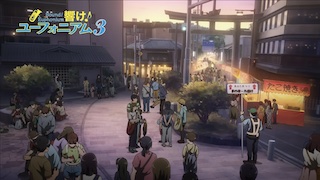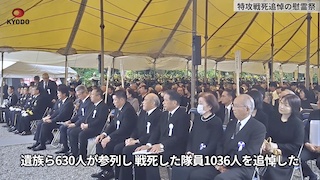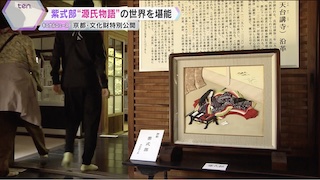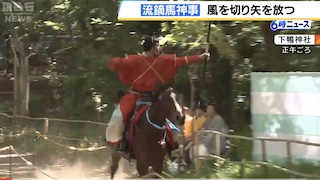Apr 24 (Kings and Generals) - Kings and Generals animated historical documentary series on the history of Japan continues with a video in which we talk about the bushido - Samurai code of honour, the way of the warrior and ask if the Japanese nobility actually adhered to it, bringing up examples from the Shogunate and Imperial era, as well as discussing the most famous incident that became almost synonymous with the concept of bushido took place - the 47 Ronin.
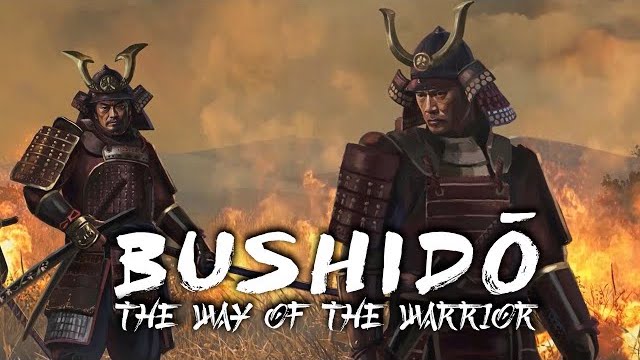
Lord Nagamasa of Azai was sitting in a dimly lit room, deliberating the content of a letter one of his retainers had delivered to him earlier that same day. His brother-in-law, Lord Nobunaga, was marching his troops through his clan's territory to conquer the land of the neighboring Asakura family. Nagamasa sighed heavily. He had married Nobunaga's sister a few years earlier, bringing the two clans together, but the Asakura and the Azai had a deep bond of friendship that spanned decades. Picking either side in this conflict would mean betraying one alliance; picking none could very much result in angering both. Which side was more likely to win in this war? Which alliance was morally more deserving to be honored?
After much thought, he decided to cast his lot with the Asakura clan and honor the long-standing friendship between the two families. He prayed to the gods this was the right decision. Lord Nagamasa's plight was just one example of the many moral dilemmas, betrayals, and codes of honor that had been part of Samurai life for centuries.
In the late 19th century, Nitobe Inazo wrote the book "Bushido: The Soul of Japan," an exceptionally popular read that made the warrior class of Japan and their chivalric tenets famous around the world. But there was a problem. His romanticized representation of a warrior's code was rather detached from historical reality.
While behavioral codes that samurai ought to follow appear as early as the Kamakura period, and nobody can argue that samurai always emphasized the value of loyalty, bravery, and honesty, there was no universal school of thought that all samurai of all periods abided by. Various samurai clans had sets of rules they expected their warriors to abide by, but even then, it was really up to the individual to uphold them as he saw fit. Philosophers and idealists could be writing volumes on the ideal warrior, but most samurai, especially during the tumultuous Sengoku period, were pragmatists. Loyalty to one's lord is good and honorable, but when the entire country is at war, loyalty to one's self is even better. Indeed, Japan's infamous Civil War period can be characterized by disloyalty, for defection and betrayal were commonplace among warriors who sought to elevate their status. Thus, it is likely that the philosophic musings on samurai honor that were written during this time reflect not the reality of the period but are instead an attempt to reverse the chaos and stop the disloyal behavior that was really going on.
To explore the roots of the concept of Bushido, we start from the beginning: the Kamakura period, when the Shogun overthrew the Emperor's authority, and the samurai class first came to rule Japan. When the warrior class took power from the Chinese-style nobility of the Imperial court in Kyoto, they felt it was necessary to promote a set of ideas that set them apart from the nobles and defended their right to be the ruling class. Nobility valued refinement and the cultivation of spirit through poetry, literature, and ceremony. In contrast, the bushi, who mostly lived outside Kyoto and were less familiar with these ideals, instead chose to adopt different virtues to inflate their prestige. Bravery, battle prowess, loyalty, and defiance of death defined a warrior's honor. While writings such as the Heike Monogatari promote the romantic idea that a warrior should be cultured and refined, these literary works cannot really be trusted to portray reality accurately. More trusted and grounded sources stress that valor, fidelity, and integrity are the core values of the Samurai. Frugality is also highly valued, probably due to the personal example of Minamoto no Yoritomo, the first Shogun of Japan, who set up his administration in Kamakura instead of Kyoto and famously refused to live a life of luxury.
This is not to say that refinement, culture, and the development of mind were out of the samurai's reach or interest. On the contrary, these things found their way even into the most rustic and faraway regions under Samurai rule, especially during the Muromachi period, when the Ashikaga shoguns chose the old Imperial capital of Kyoto, with all its cultural heritage, as their seat of power. The different ideals that governed samurai behavioral norms underwent further mutations during the Sengoku jidai. In the massive free-for-all that was the age of civil war, military prowess and bravery were once again elevated in importance. Victory was more important than adhering to whatever one thought constituted a fair and clean fight. The dark pragmatism of these days can be summarized in the words of Asakura Norikage, who claimed that he would happily be called a beast or dog so long as he won. In one of the best examples of dishonorable samurai behavior, Oda Nobunaga famously set fire to the entirety of the sacred monastery on Mount Hiei, burning the warrior monks of Enryaku-ji along with the women and children that had sought refuge there.
Among the many things that were hard to come by in the Sengoku Jidai, loyalty was definitely one of them. There are countless examples of samurai who switched their allegiances to serve a new master, sometimes during the middle of battles. Was Akechi Mitsuhide morally right when he attacked his own lord in the middle of the night? How honorable was it for the Sanada clan to play both sides during Sekigahara by sending the eldest son to the Tokugawa and the younger to the Toyotomi? Was Takenaka Hanbei dishonored when he switched to the Oda camp? Had these been the days of Yoritomo, Hanbei would have been disgraced, and Hideyoshi, a vassal of the Oda clan at that time, would likely not have accepted him. But in reality, Toyotomi Hideyoshi was more than thrilled to add one of the most brilliant strategic minds of the time to his cause and use him to find success in battle.
With all that said, we must not get the wrong idea that everyone during the Sengoku Jidai was an eager turncoat who had no morals either. There are many notable individuals who stuck to their principles and were revered and thought of highly because of it. Nevertheless, the spirit of the age was that warriors were more concerned with the result of battles than their own personal integrity. Survival during this age required a certain level of shrewdness and a lack of scruples, making deception and betrayal ultimately permissible in the political climate. The Sengoku Jidai came to an end with the ascendancy of the Tokugawa Shogunate, which unified Japan and ushered in an unprecedented 250-year period of peace known as the Edo Era. It is during this era, after the great samurai battles of old had become a thing of the past, that we first encounter the word ‘bushido' in the historical record. As this period of history was peaceful, especially compared to the previous times, the way of the warrior, as Bushido directly translates into, expanded from the narrower martial principles of the warring states era to find applications in the more general day-to-day life. It also turned to more romanticized and idealized versions of past ideals, especially those of the early Kamakura period, which was looked upon by the Japanese of the Edo era as an age of heroes like Minamoto no Yoshitsune or Benkei. In its effort to bring stability to the country and obedience to its regime, the Tokugawa government supported the re-idealization of loyalty in the national narrative. Consequently, the authors of works such as the Hagakure quite conveniently overlooked the historical reality that was filled with acts of treason by both masters and vassals. This nostalgic approach for the golden bygone days would be the one to give birth to the version of bushido that is widely known in the West today. What had once begun as a heterogeneous set of simple house rules created by various clans that sought to expand their influence and control over the land now blended with a Confucian-based gentleman's code and the romantic views of individuals who, disappointed with the reality around them, fantasized about the ideal warrior in a peaceful age where real warriors were becoming more and more scarce. Perhaps ironically, it was also during this era that the most famous incident that became almost synonymous with the concept of bushido took place.
The 47 Ronin The complexities behind samurai honor and bushido are showcased in the incident of the Ako vendetta, more commonly known as the revenge of the 47 Ronin. The story of these 47 individuals begins in 1701, when their daimyo, Asano Naganori, lord of Ako province, along with another lord, was instructed to arrange a reception for Imperial envoys. Soon, amity developed between the young daimyo and Yoshinaka Kira, the Shogunal official who was supervising the preparations [surely it's the opposite? sounds like they became enemies]. Reportedly, Kira was overly harsh and frequently insulted Naganori while praising the other lord, which one day led to Naganori assaulting the official inside the Shogun's own residence with a knife and wounding him in the face. For this assault and for drawing a blade inside Edo castle, Naganori was sentenced to commit seppuku. His lands and titles were confiscated, and his retainers became ronin, masterless samurai. It is here that the epic of the 47 Ronin begins. Compelled by their sense of honor, they swore to avenge the death of their lord, even if he had been on the wrong side of the law. For two years they spied on Kira using fake identities, all the while planning his assassination. Finally, on the 30th of January 1703, it was time for them to strike. At night, they assaulted the official's residence, killed his retinue, and after searching the mansion's grounds, they found Kira and promptly beheaded him. One of the ronin hurried back to the clan's former domain to announce the news of their revenge while the rest carried Kira's head to the tomb of their dead master as proof of fulfilling their vows. After this, they all turned themselves in to the authorities. Needless to say, the Shogun had a hard time distributing justice. From an ethical standpoint, it could be argued that they had acted properly and it was right to avenge their lord's death. Moreover, the Ronins' actions had earned them many sympathizers amongst the people. On the other hand, they had committed a serious crime. A middle-ground solution was reached by allowing the Ronin to commit seppuku so at least they could die with honor rather than be executed like common criminals. Forty-six ronin ended their lives in this way, the one that was missing was eventually pardoned. The ronin is a prime example of honor and loyalty to one's master, and many men praised them. Fate was on the side of the 47 Ronin. Their plan worked with great success, and they became paragons of loyalty and honor, their story becoming known nationwide through kabuki plays and songs.
Bushido in Imperial Japan The legacy of the 47 Ronin and the various literary works published during the Edo period had major influences on the development of the bushido code during the last days of the samurai. Even after the abolishment of the Samurai caste in the Meiji Revolution, the new Imperial Japanese government was not shy to use the popular image of the samurai and the romantic ideals of the bushido to indoctrinate its newly modernized imperial army and further its imperialistic goals in the Far East. Despite the fact during the revolution, tens of thousands of samurai had literally turned against their shogun, sided with the Emperor and overthrew the military government, they were still considered paragons of loyalty and honor and became Japan's national symbol. In Imperial Japan, the idea of bushido shifted once more, with to the lord replaced by absolute devotion to the Emperor. The ideal Imperial Japanese soldier was to imitate the samurai of the past, or at least what the influential figures of the time thought the warriors of old were like. To kill and die for the Emperor was all that mattered. It was in this nationalistic environment that Nitobe wrote and published his book. It got many things wrong, portraying a white-washed image of the samurai, a version that was probably more akin to what Nitobe wished or believed the samurai were. But for all its fallacies and damage it did to the actual history, it became a bestseller both domestically and in the West, and it wouldn't be wrong to say that the popular image of the samurai and bushido stems from Nitobe's seminal novel.
Throughout the late 19th and early 20th century, generations of young Japanese boys were indoctrinated into the philosophy that dominated the Imperial Army until the end of the Second World War. This philosophy wasn't bushido per se but was more of an amalgamation of the warrior's code, the Imperial cult, and miscellaneous nationalist ideas. It produced soldiers who were fanatically devoted to their duty, leading to many atrocities, such as those committed in China during the fall of Nanking. In the Western world, the popularity of literary works like Nitobe's, the rise of classic samurai cinema, and the prevalence of martial arts dojos in Western cities have all contributed to the image of the perfect samurai dominating Western pop culture. To Western audiences, the samurai is considered pure, a warrior who masters both his weapons and his spirit. The Samurai fights fair and honorably and is loyal beyond any doubt. This makes good hero material for stories to be told, but as we now know, this image is far detached from reality. The true samurai of history had their own moral codes like every other warrior culture did. They did not fear death, but they were also not stupid enough to actively seek it. They were loyal, but not blind to political machinations. They recognized and valued the glory of head-to-head combat but were not above underhanded methods like assassinations, ambushes, and deception. At the end of the day, as warriors, their purpose was to defeat their enemies, not to lead virtuous lives.


